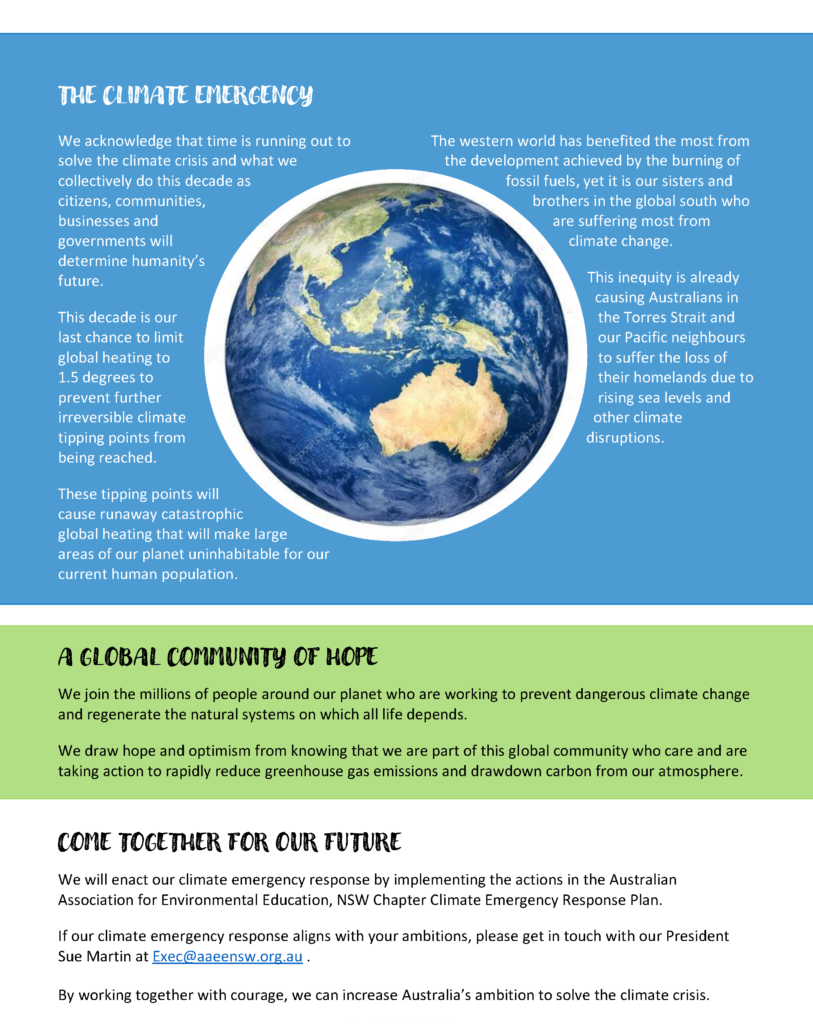Why is EE NSW trying to achieve net zero?
In January 2020 the AAEE National Association declared a climate emergency as a result of lobbying by the NSW Chapter. This climate emergency declaration was initiated in August 2019, when the youth-led Global Climate Strikes and the start of the NSW mega-bushfires made EE NSW acutely aware that it was time to step up and show climate leadership.
The EE NSW climate emergency declaration calls for two things:
- That all Australian federal, state, and territory parliaments and all local councils declare a climate emergency; and
- That our members continue to work with their employers to declare a climate emergency and support the national climate strikes.
Leadership
EE NSW wants to show climate leadership by moving to net zero emissions and by encouraging and supporting other organisations to also move to net zero emissions as quickly as possible.
Whilst EE NSW’s footprint is very small when compared with many others (corporations, government etc), the association wishes to help members who want to develop Net Zero Emissions Plans, by sharing their experiences and lessons learned from the development of this plan.
Science-based targets
Almost 200 countries, including Australia, signed the United Nations Paris Agreement on Climate Change in 2015, setting a target of limiting global temperatures to ‘well below 2°C and pursue efforts to below 1.5°C’. However the Intergovernmental Panel on Climate Change (IPCC) Special Report from March 2018 warns governments of the stark difference of a 2°C warmer world compared with 1.5°C. It states that to have a 50% chance of keeping global warming below 1.5°C (or returning to 1.5% before 2100 after an overshoot) we need to reduce carbon emissions by at least 45% by 2030 (based on 2010 levels) and then rapidly drop to zero by 2050 at the latest.
The report goes on to say that this will require rapid, far-reaching and unprecedented changes in all aspects of society, including energy, land, urban and infrastructure (including transport and buildings). ‘Business as usual’ and incremental or gradual improvements will not be enough.
Read more
This plan was developed by Lynn Delgado with Erika Van Schellebeck for EE NSW.



